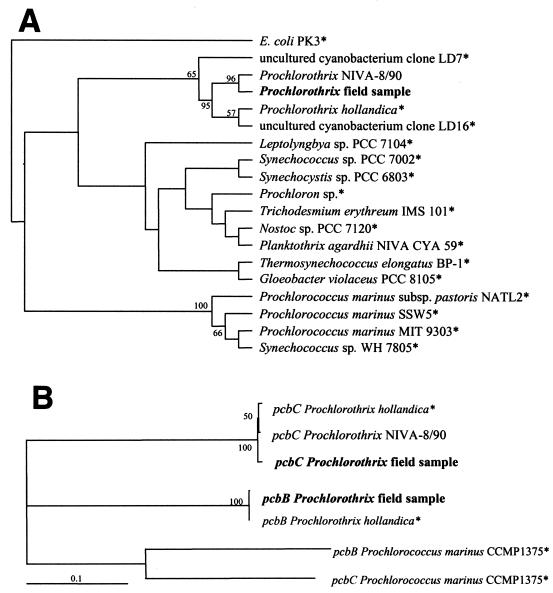FIG. 3.
Rooted cladograms obtained after phylogenetic analyses by the maximum-parsimony method (performed with PAUP, beta version 4.0; Laboratory of Molecular Systematics, Smithsonian Institution) of a 527-bp fragment of the 16S rDNA sequences (maximum-parsimony method) (A) and of a 828-bp fragment of the pcbB and pcbC sequences (neighbor-joining method) (B). Organisms whose sequences were obtained from databases are indicated by asterisks. Selected bootstrap values based on 1,000 replications are shown at the nodes; only values greater than 50% are shown. The cladograms were constructed with TreeView (version 1.5; R. D. M. Page).

